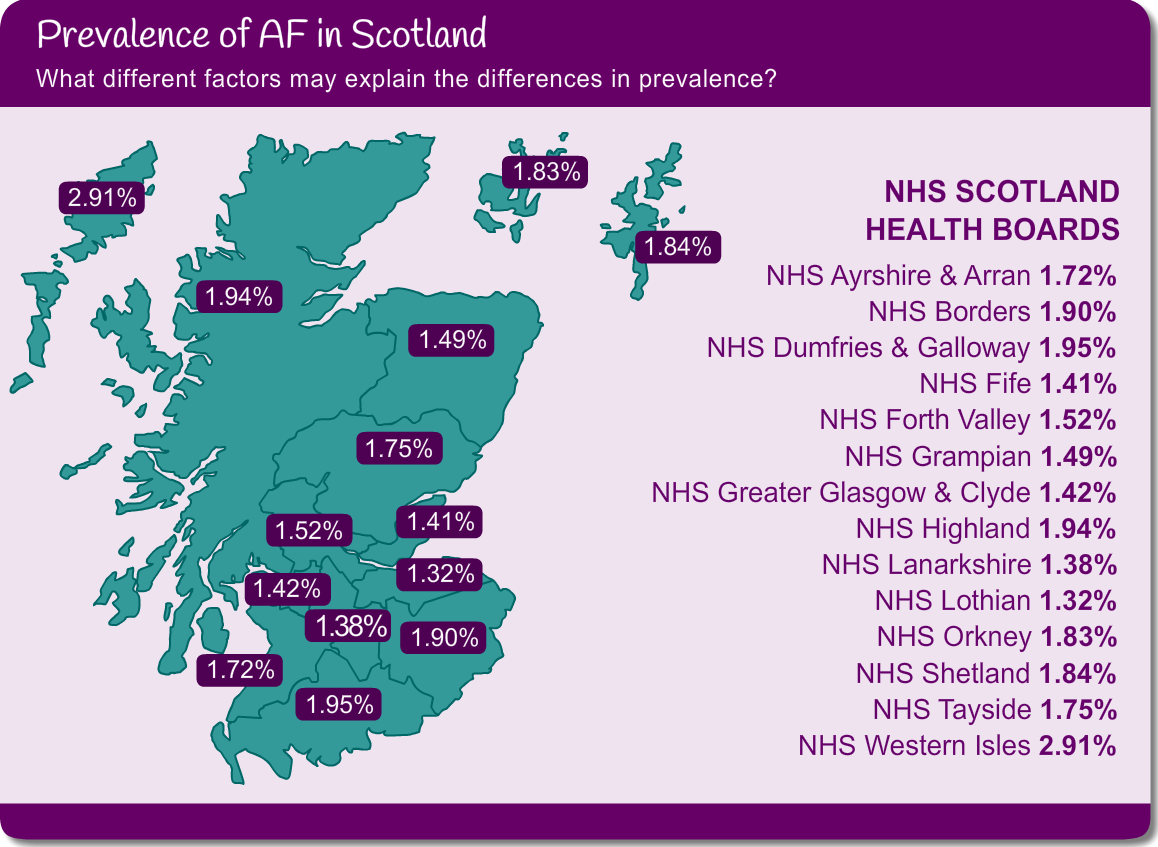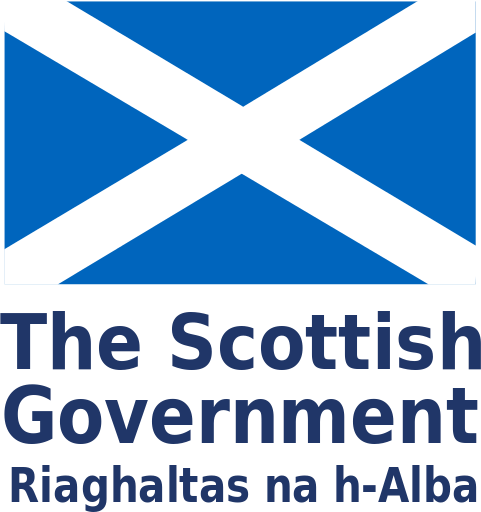ESC (2012) suggests the current estimate of the prevalence of atrial fibrillation (AF) in the developed world is approximately 1.5–2% of the general population, with the average age of patients with this condition steadily rising, such that it now averages between 75 and 85 years.
One in four people aged over 40 will experience AF (The Framingham Heart Study, 2004). The incidence of AF doubles every decade after the age of 55 years. A recent study predicted an increase in the prevelence of AF in the general population by 2050 to 5%.
Consider this map which shows the ISD Scotland Quality Outcomes Framework (QOF) reported prevalence of atrial fibrillation in Scotland 2012/13.

Some things you may want to consider:
- prevalence in more affluent areas
- increase in survival
- increase in health screening
Prevalence of AF in Scotland
| Health board | Prevalence |
|---|---|
| NHS Ayrshire & Arran | 1.72% |
| NHS Borders | 1.90% |
| NHS Dumfries & Galloway | 1.95% |
| NHS Fife | 1.41% |
| NHS Forth Valley | 1.52% |
| NHS Grampian | 1.49% |
| NHS Greater Glasgow & Clyde | 1.42% |
| NHS Highland | 1.94% |
| NHS Lanarkshire | 1.38% |
| NHS Lothian | 1.32% |
| NHS Orkney | 1.83% |
| NHS Shetland | 1.84% |
| NHS Tayside | 1.75% |
| NHS Western Isles | 2.91% |
Pulse point
ESC Management of Atrial Fibrillation Guidelines, 2016 Suggests the current estimate of the prevalence of atrial fibrillation (AF) in the developed world is approximately 1.5–2% of the general population, with the average age of patients with this condition steadily rising, such that it now averages between 75 and 85 years.
Page last reviewed: 29 Jul 2020


